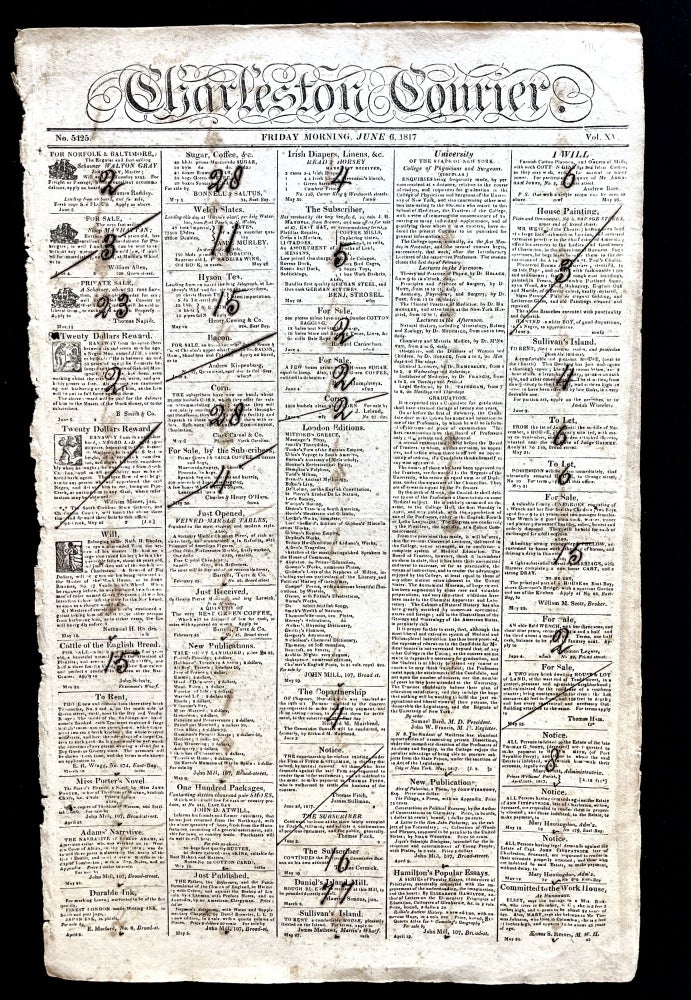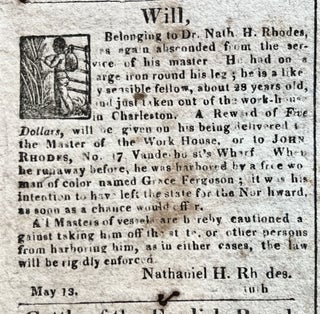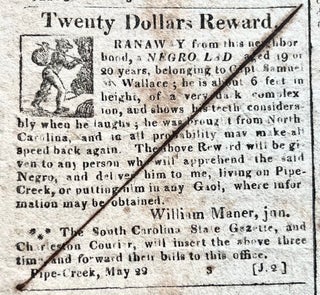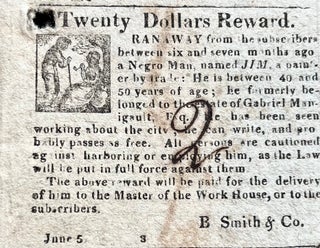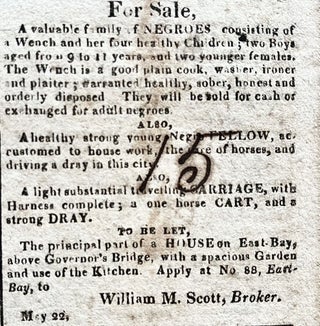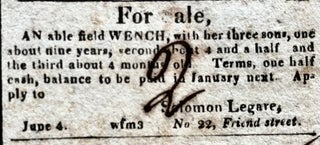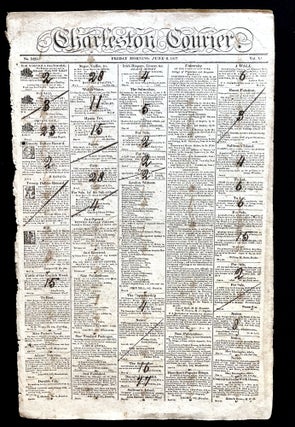1817 Charleston, South Carolina newspaper with Front-Page Illustrated Slave Ads (Editor's Own Copy)
Charleston, SC: Charleston Courier, 1817. Very Good. Item #16012
A visually striking 1817, pre Civil War, Charleston newspaper with three front-page illustrated ads for runaway slaves, each offering a reward, as well as two front page ads offering 'NEGR0ES' for sale, including one for an entire family.
This newspaper is dated June 6, 1817 and features bold editor's marks on the first and third pages, identifying the number of issues each ad is to run.
The three ads for runaways each feature a different illustration and mention the slaves by name, all male and named Wallace, George and Jim, and all from the Charleston area.
Both of the 'NEGR0ES' for sale ads are offering valuable families and 'WENCH'es among others, with one reading - "An able field WENCH, with her three sons, one about nine years, second about 4 and a half, and the third about 4 months old."
The other ad offers - "A valuable family of NEGR0ES consisting of a Wench and her four healthy children; two boys aged from 9 to 11 years, and two younger females. The Wench is a good plain cook, washer, ironer, plaiter; guaranteed healthy, sober, honest and orderly disposed."
"Any history of slavery in America begins with Charleston.
"During the Transatlantic Slave Trade, about 40 percent of enslaved Africans brought into the country passed through Charleston Harbor. Often these slaves were sold around the South to supply the plantation industry with the cheap labor it needed to be profitable. But a great number of those slaves remained in South Carolina.
"By 1860, there were 4 million slaves in the United States, and 400,000 of them -- 10 percent -- lived in South Carolina. African-Americans, enslaved and free, made up 57 percent of the state’s population. Charleston was the nation’s capital of the slave trade, the place where many of those enslaved people first landed in the New World.
"The city was built on slave labor and, for nearly 200 years, thrived under a slave economy.
"Nearly a century and a half has passed since slavery was abolished, but the wounds still linger. Even in 1865, long after Charleston’s slave mart had sold its last human being, the occasion was bittersweet. When Coffin told More that she was free, and would never be sold again, she was melancholy.
“O the blessed Jesus, He has heard my prayer,” More said. “I am so glad; only I wish I could see my husband. He was sold at the same time into the country, and has gone I don’t know where.” - Brian Hicks, Charleston Courier.
This newspaper is in Very Good condition with mild edge wear and two small holes, on on ethe back page and the other through both pages, which does affect the margin only of one of the runaway ads. Measuring 21" X 13 1/4, this historic piece is perfect for framing and display!
#2D-020.
Price: $150.00

